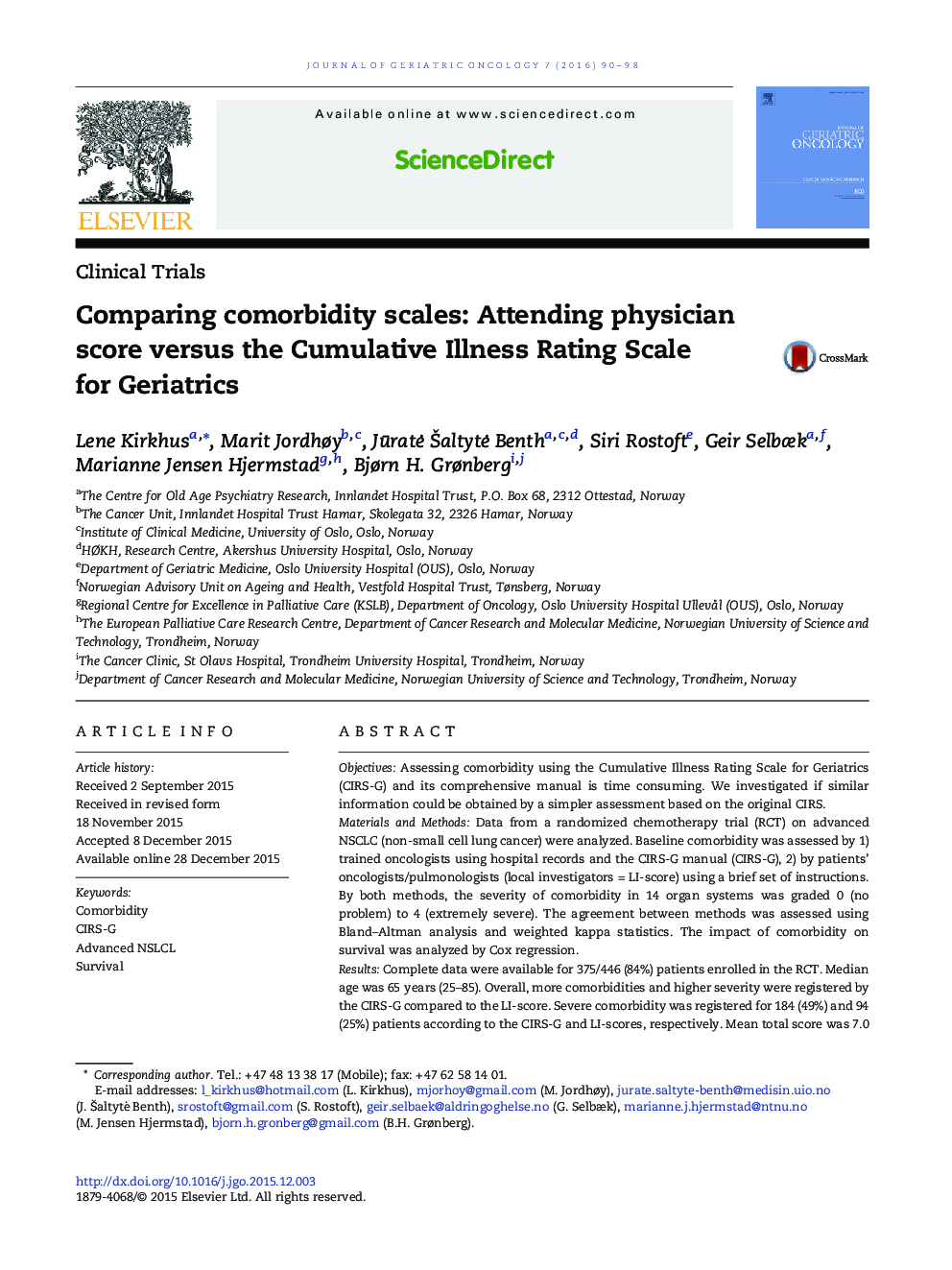| Article ID | Journal | Published Year | Pages | File Type |
|---|---|---|---|---|
| 1912210 | Journal of Geriatric Oncology | 2016 | 9 Pages |
ObjectivesAssessing comorbidity using the Cumulative Illness Rating Scale for Geriatrics (CIRS-G) and its comprehensive manual is time consuming. We investigated if similar information could be obtained by a simpler assessment based on the original CIRS.Materials and MethodsData from a randomized chemotherapy trial (RCT) on advanced NSCLC (non-small cell lung cancer) were analyzed. Baseline comorbidity was assessed by 1) trained oncologists using hospital records and the CIRS-G manual (CIRS-G), 2) by patients' oncologists/pulmonologists (local investigators = LI-score) using a brief set of instructions. By both methods, the severity of comorbidity in 14 organ systems was graded 0 (no problem) to 4 (extremely severe). The agreement between methods was assessed using Bland–Altman analysis and weighted kappa statistics. The impact of comorbidity on survival was analyzed by Cox regression.ResultsComplete data were available for 375/446 (84%) patients enrolled in the RCT. Median age was 65 years (25–85). Overall, more comorbidities and higher severity were registered by the CIRS-G compared to the LI-score. Severe comorbidity was registered for 184 (49%) and 94 (25%) patients according to the CIRS-G and LI-scores, respectively. Mean total score was 7.0 (0–17) (CIRS-G) versus 4.2 (0–16) (LI-score), and mean severity index (total score/number of categories with score > 0) was 1.73 (SD 0.46) versus 1.43 (SD 0.78). Neither the CIRS-G scores nor the LI-scores were prognostic for survival.ConclusionThe CIRS-G scores and LI-scores had poor agreement, indicating that assessment method affects the registration of comorbidity. Thorough descriptions of comorbidity registrations in trials are paramount due to lack of a standardized assessment.
